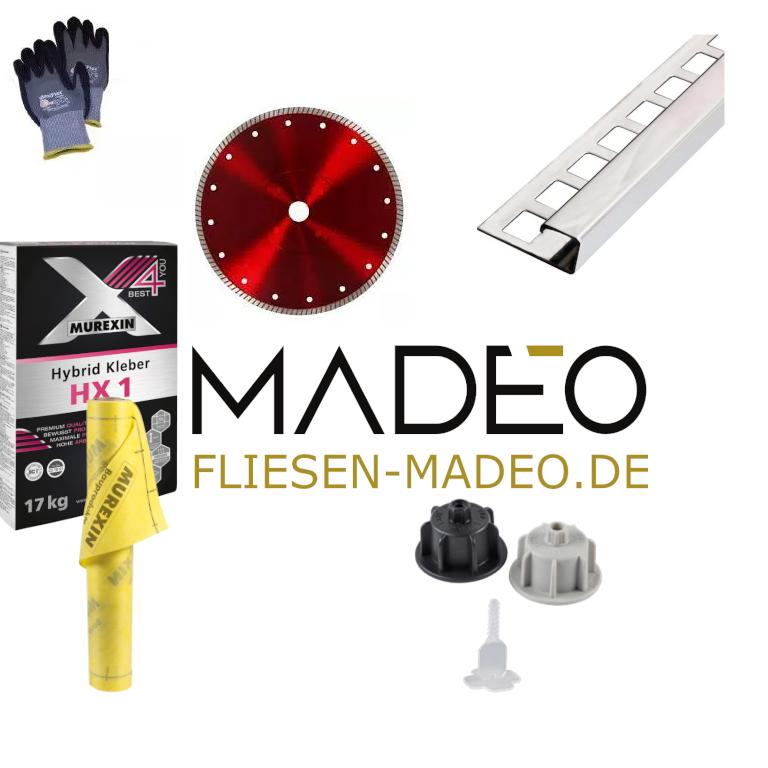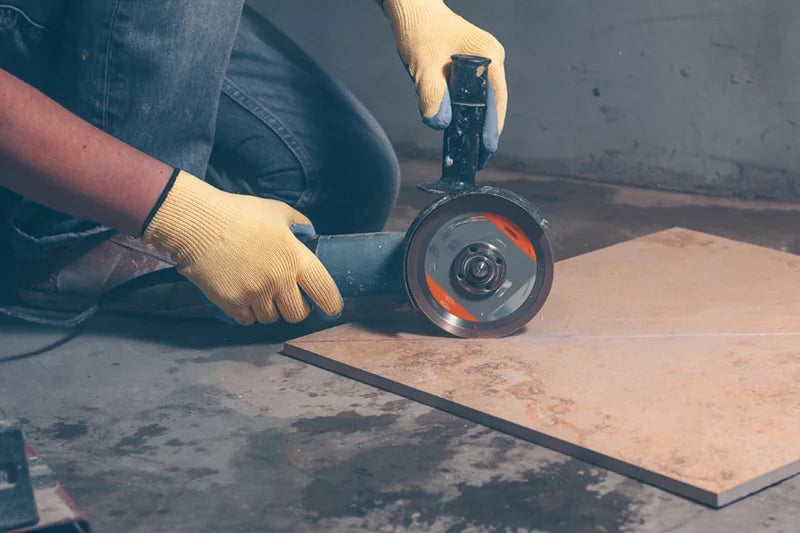When installing tiles, it is important to note whether the edges are rectified or unrerected. In this article, we'll look at the differences between rectified and unrerected edges in tiles and explain the pros and cons of each option.
What are rectified edges?
Rectified edges are edges that have been machined to create a perfect, square edge . The tiles are manufactured so that their edges are cut with a precision of +/- 0.1 mm. The result is a very straight edge that allows for an even joint width. Rectified edges are typically used on larger tile formats to create a nearly seamless appearance.
Advantages of rectified edges
One of the biggest benefits of rectified edges is their clean, modern appearance. Rectified edges allow for a very narrow joint , resulting in an almost seamless appearance. This is particularly important with large format tiles, as larger tiles with wider joints can look unaesthetic. Rectified edges also allow for easier cleaning and maintenance because there are fewer joints for dirt and moisture to enter.
Disadvantages of rectified edges
The biggest disadvantage of rectified edges is their higher price compared to unretected edges. Because the manufacturing process is more complicated and requires more time and materials, tiles with rectified edges are typically more expensive. Additionally, installing tiles with rectified edges requires more experience and skill to ensure they are installed properly.
What are Unrectified Edges?
Unrectified edges are edges that have not been machined and therefore may have a slightly uneven edge. These edges are more common on smaller format tiles as they are generally less noticeable than on larger tiles. Unrectified edges allow for a larger joint width and are usually more cost-effective than tiles with rectified edges.
Advantages of unrerected edges
The biggest advantage of unrectified edges is their lower price. Because they require less machining, tiles with unrerected edges are typically less expensive than tiles with rectified edges. They are also easier to install because they allow for greater joint width and require less precise cutting.
Disadvantages of unrerected edges
The biggest disadvantage of unrectified edges is their uneven appearance.






